17+ Storyboard Examples to Download
When writing a short story, one can use an outline to help generate a foundation for the author. Storyboards are the visual counterparts of a short story outline, which acts as a visual outline for artists.
1. Storyboard Template
2. Landscape Storyboard Template
3. Storyboard Teachers Network Template
4. Documentary Storyboard Template
5. Standard Storyboard Template
6. Audio Video Storyboard
7. FS1 Storyboard Template
8. Animation Storyboard Template
9. Blank Simple 6 Panel Storyboard
10. eCampus Blank Storyboard Template
11. Biographical Video Storyboard Template
12. Creating Storyboard using Microsoft Word
13. Storyboard Storytelling Competition
14. Photoshop Storyboard Templates
15. Scholastic Storyboard Template
16. Diwali Storyboard Template
17. Storyboard and Animatic Animation
18. Customer Journey Storyboard
What Is Storyboard
A storyboard is a curated collection of panels that are composed of different scenes that will be used to tell a specific portion of the story. The standard storyboard has many uses and can even be made to outline a specific scene on a video with a video storyboard.
How to Storyboard
A well-made storyboard will supply the artist and the client with a foundation and a base that they can work with. If you need a reference for your storyboard, you may consult any of the storyboard samples, animatic storyboards, and other storyboard templates on the list above.
1.) Choose the Type of Storyboard You are Going to Make
Begin by identifying the type of storyboard you are going to make, this could range from photography storyboards to animation-style storyboards. This step will set the tone of what type of content will be used in the storyboard.
2.) Create the Storyboard Panels
After selecting the type of storyboard you have made, you must create at least six storyboard panels that are evenly spaced inside the storyboard. Ensure that each panel is the same size or has the proper size necessary for the panel to work. Also, you may number each panel in order of their appearance, this is more useful when you are making a storyboard that has a plot.
3.) Draw or Insert a Picture in the Panel
When you have finished creating your storyboard panels, you can now either insert a photo or create a drawing to fit inside the panel. The drawing or photo does not have to be the highest quality possible as the storyboard focuses more on direction and form. The overall composition and structure are more important than the minute and small details of the picture or drawing inside the panel.
4.) If Needed, Add a Description or Directions Under the Panel
Some storyboards opt to not use any descriptors or directions under the panel. But if you want to add them then do so by writing a small number of phrases or sentences under the finished panel.
5.) Repeat Steps Three and Four Until Satisfied
When you have finished steps three and four, you will have to repeat them in order until you have completed all the panels inside the storyboard. Note that the storyboard will only cover a specific amount of scenes that will compose a specific portion of the plot. A finished story will require plenty of storyboards.
FAQs
What are the advantages of using a storyboard?
Storyboards help visualize and create a sense of progression in the story. This in turn will help the author or artist create the scene they want they visualized in their head. Similar to an outline, the storyboard will also include different directions and scenes that will not be visually presented in the final output. This will help prevent the author or the artist from making small mistakes due to vague directions and poorly planned decisions. Another advantage a storyboard can give is by allowing other people to be on the same level as the author on the artist and can prevent various misunderstandings between the artist and their clients.
Do I need to be good at drawing to create a storyboard?
The storyboard is technically equivalent to an outline of a written-out story. This means the storyboard is a rough draft of different numbers of scenes all with accompanying directions and descriptions. Because of this, the storyboard does not need to be detailed and can even be created with just stick figures. This is especially useful and important if the artist’s client wants a specific scene to happen, but cannot properly describe this to the artist.
Who should make the storyboard?
The people who make the storyboard are the artists and the clients of a specific project that has permission to create the storyboard. This is because the storyboard acts as the outline of a specific group of scenes on which the artist will base their output. Not only that but the storyboard will also be a focal and visual middleman between the artist and the client and will act as a bridge between the two. This means that the storyboard can prevent various misunderstandings that may arise due to miscommunication between both parties.
A storyboard is a tool used by artists and designers to describe a set of scenes through rough drawings and descriptions. A good storyboard can tell the whole direction of the scene in just a couple of frames. In conclusion, when leveraged correctly, the storyboard can create an interconnected scene that will be high quality and properly paced.
17+ Storyboard Examples to Download
When writing a short story, one can use an outline to help generate a foundation for the author. Storyboards are the visual counterparts of a short story outline, which acts as a visual outline for artists.
1. Storyboard Template

vyond.com
Details
File Format
PDF
Size: 15 KB
2. Landscape Storyboard Template

directingchangeca.org
Details
File Format
PDF
Size: 13 KB
3. Storyboard Teachers Network Template
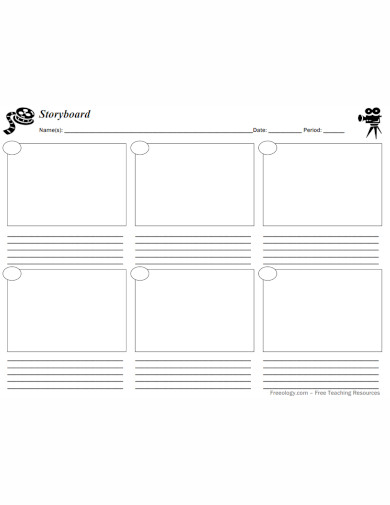
teachersnetwork.org
Details
File Format
PDF
Size: 17 KB
4. Documentary Storyboard Template
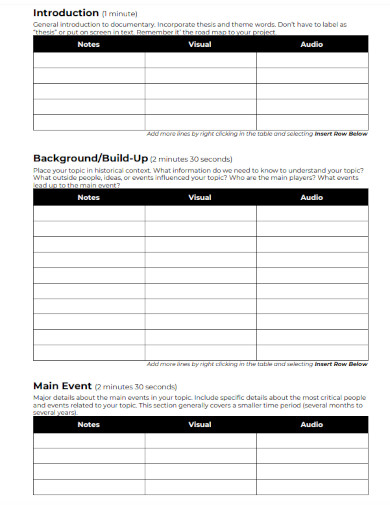
mnhs.org
Details
File Format
PDF
Size: 43 KB
5. Standard Storyboard Template
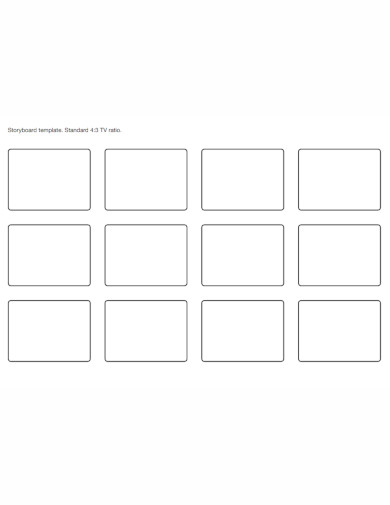
wideopenspace.co.uk
Details
File Format
PDF
Size: 11 KB
6. Audio Video Storyboard
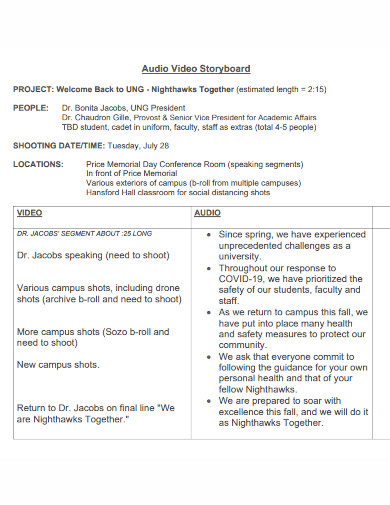
ung.edu
Details
File Format
PDF
Size: 67 KB
7. FS1 Storyboard Template
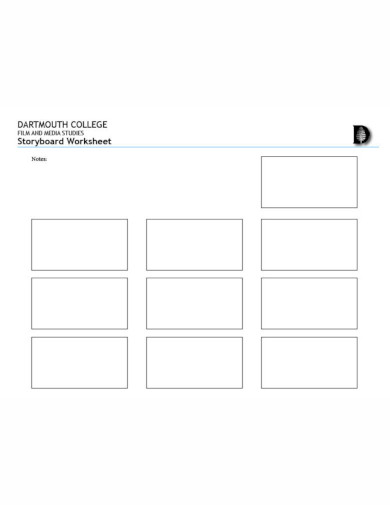
film-media.dartmouth.edu
Details
File Format
PDF
Size: 11 KB
8. Animation Storyboard Template
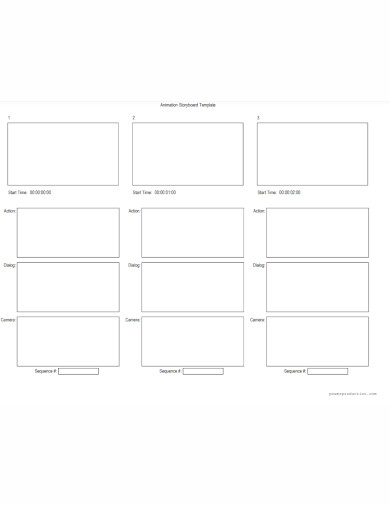
powerproduction.com
Details
File Format
PDF
Size: 13 KB
9. Blank Simple 6 Panel Storyboard
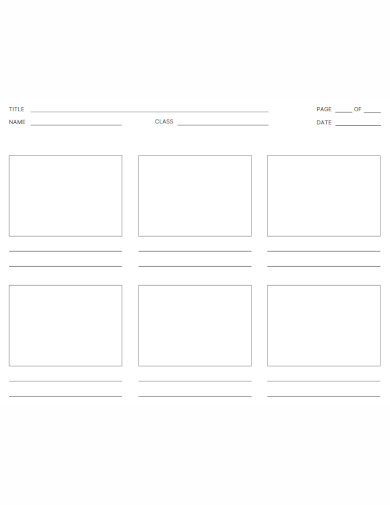
sciencenews.org
Details
File Format
PDF
Size: 10 KB
10. eCampus Blank Storyboard Template

sjsu.edu
Details
File Format
PDF
Size: 17 KB
11. Biographical Video Storyboard Template
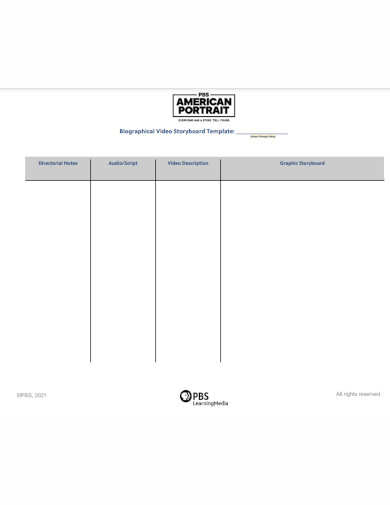
d43fweuh3sg51.cloudfront.net
Details
File Format
PDF
Size: 10 KB
12. Creating Storyboard using Microsoft Word
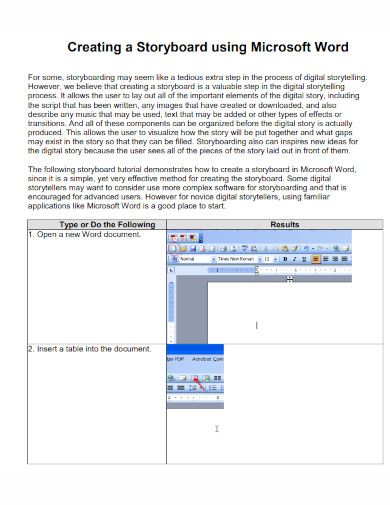
digitalstorytelling.coe.uh.edu
Details
File Format
PDF
Size: 66 KB
13. Storyboard Storytelling Competition
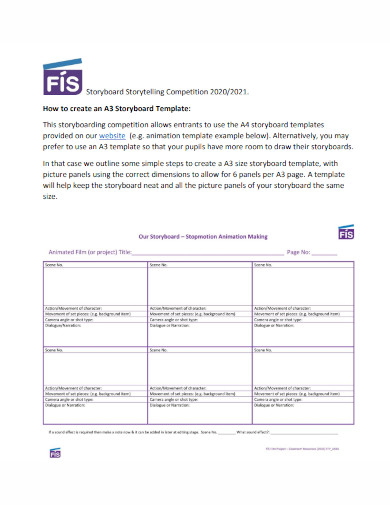
fisfilmproject.ie
Details
File Format
PDF
Size: 44 KB
14. Photoshop Storyboard Templates
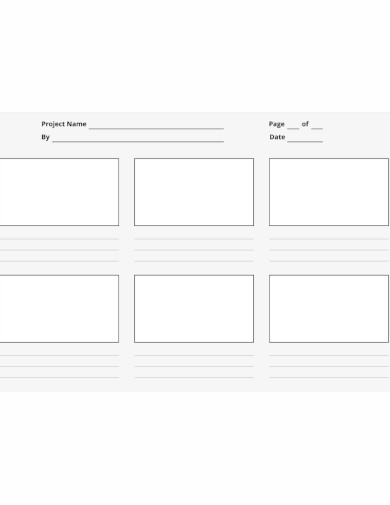
cdn2.hubspot.net
Details
File Format
PDF
Size: 10 KB
15. Scholastic Storyboard Template
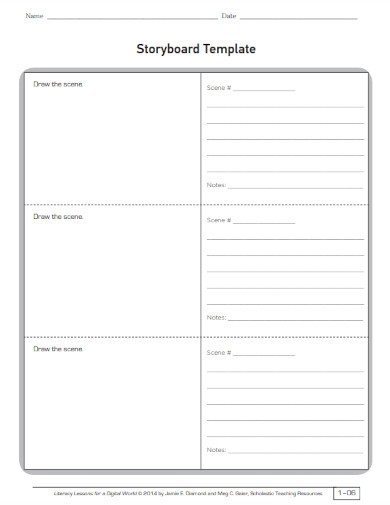
scholastic.com
Details
File Format
PDF
Size: 23 KB
16. Diwali Storyboard Template
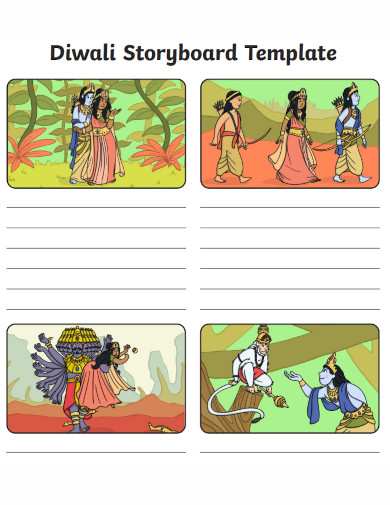
ox-close.durham.sch.uk
Details
File Format
PDF
Size: 63 KB
17. Storyboard and Animatic Animation
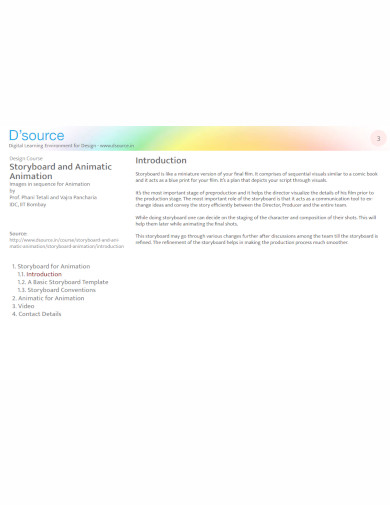
dsource.in
Details
File Format
PDF
Size: 21 KB
18. Customer Journey Storyboard
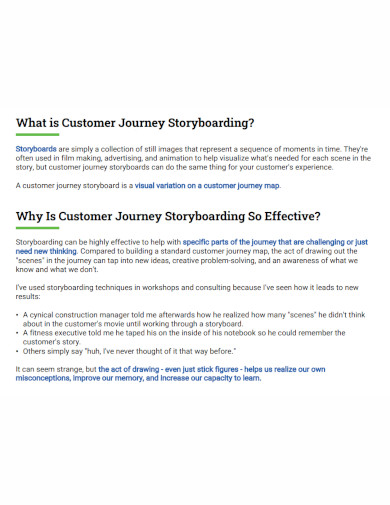
experienceinvestigators.com
Details
File Format
PDF
Size: 48 KB
What Is Storyboard
A storyboard is a curated collection of panels that are composed of different scenes that will be used to tell a specific portion of the story. The standard storyboard has many uses and can even be made to outline a specific scene on a video with a video storyboard.
How to Storyboard
A well-made storyboard will supply the artist and the client with a foundation and a base that they can work with. If you need a reference for your storyboard, you may consult any of the storyboard samples, animatic storyboards, and other storyboard templates on the list above.
1.) Choose the Type of Storyboard You are Going to Make
Begin by identifying the type of storyboard you are going to make, this could range from photography storyboards to animation-style storyboards. This step will set the tone of what type of content will be used in the storyboard.
2.) Create the Storyboard Panels
After selecting the type of storyboard you have made, you must create at least six storyboard panels that are evenly spaced inside the storyboard. Ensure that each panel is the same size or has the proper size necessary for the panel to work. Also, you may number each panel in order of their appearance, this is more useful when you are making a storyboard that has a plot.
3.) Draw or Insert a Picture in the Panel
When you have finished creating your storyboard panels, you can now either insert a photo or create a drawing to fit inside the panel. The drawing or photo does not have to be the highest quality possible as the storyboard focuses more on direction and form. The overall composition and structure are more important than the minute and small details of the picture or drawing inside the panel.
4.) If Needed, Add a Description or Directions Under the Panel
Some storyboards opt to not use any descriptors or directions under the panel. But if you want to add them then do so by writing a small number of phrases or sentences under the finished panel.
5.) Repeat Steps Three and Four Until Satisfied
When you have finished steps three and four, you will have to repeat them in order until you have completed all the panels inside the storyboard. Note that the storyboard will only cover a specific amount of scenes that will compose a specific portion of the plot. A finished story will require plenty of storyboards.
FAQs
What are the advantages of using a storyboard?
Storyboards help visualize and create a sense of progression in the story. This in turn will help the author or artist create the scene they want they visualized in their head. Similar to an outline, the storyboard will also include different directions and scenes that will not be visually presented in the final output. This will help prevent the author or the artist from making small mistakes due to vague directions and poorly planned decisions. Another advantage a storyboard can give is by allowing other people to be on the same level as the author on the artist and can prevent various misunderstandings between the artist and their clients.
Do I need to be good at drawing to create a storyboard?
The storyboard is technically equivalent to an outline of a written-out story. This means the storyboard is a rough draft of different numbers of scenes all with accompanying directions and descriptions. Because of this, the storyboard does not need to be detailed and can even be created with just stick figures. This is especially useful and important if the artist’s client wants a specific scene to happen, but cannot properly describe this to the artist.
Who should make the storyboard?
The people who make the storyboard are the artists and the clients of a specific project that has permission to create the storyboard. This is because the storyboard acts as the outline of a specific group of scenes on which the artist will base their output. Not only that but the storyboard will also be a focal and visual middleman between the artist and the client and will act as a bridge between the two. This means that the storyboard can prevent various misunderstandings that may arise due to miscommunication between both parties.
A storyboard is a tool used by artists and designers to describe a set of scenes through rough drawings and descriptions. A good storyboard can tell the whole direction of the scene in just a couple of frames. In conclusion, when leveraged correctly, the storyboard can create an interconnected scene that will be high quality and properly paced.

